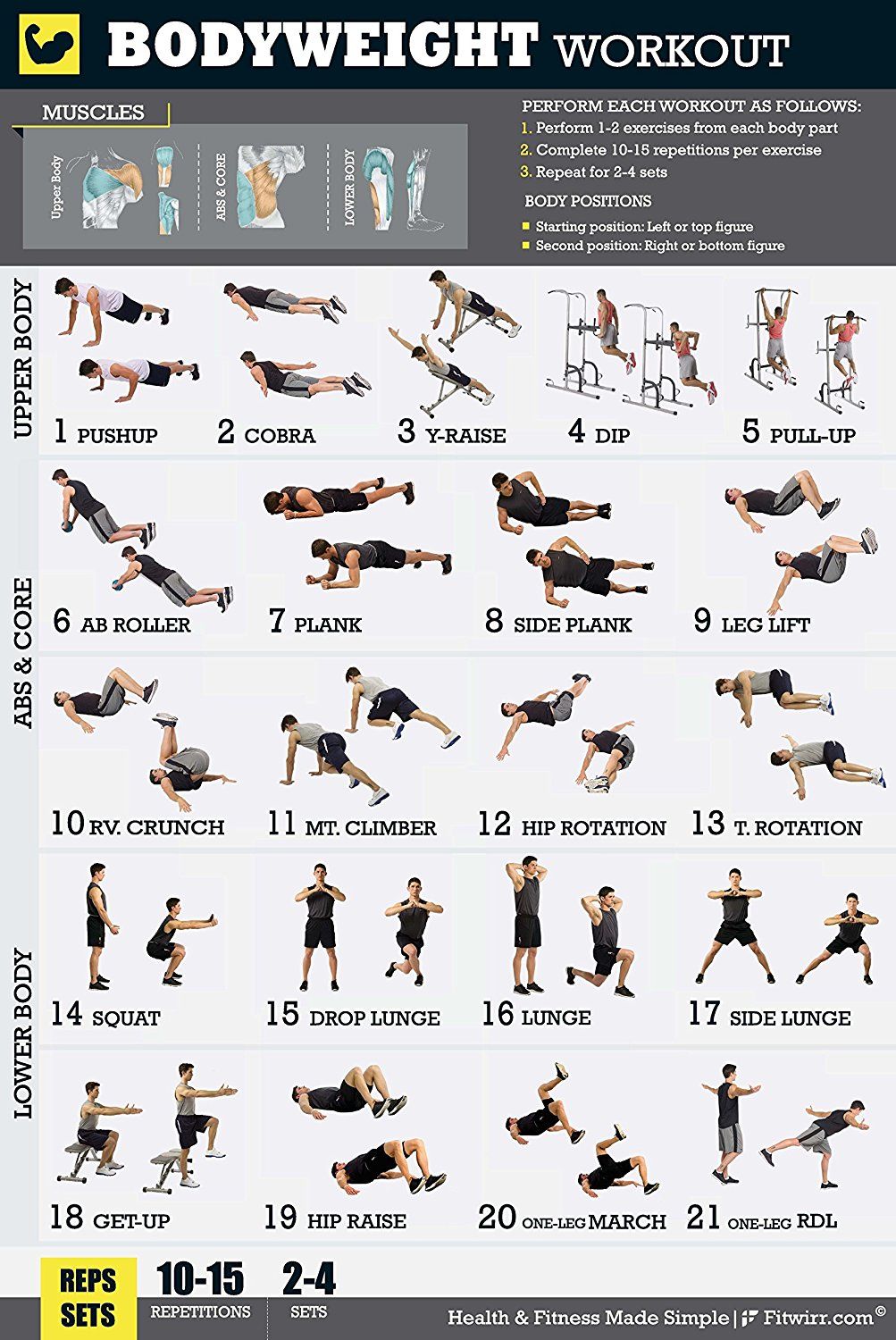
It can be challenging to fit in a 30-minute workout into your day. It can be difficult to fit in a 30-minute workout for your entire body. Also, the leg machines may be too crowded and slow. Include squats to your routine in order to keep it simple and short. Do sets of six to eight reps with one-minute rests. You can also use selectorized machines for training your whole body.
Full-body movements
A full-body work out is a 30-minute exercise that incorporates all of the primary movement patterns. These workouts provide strength and can be adjusted to suit different fitness levels. Here are three options for full-body exercises you could try:

Interval training
A 30-minute interval training workout is a good option for anyone looking to shed fat and build muscles. It doesn't require fancy equipment or a gym membership. To perform burpees, you will need a mat that's large enough to hold the weight of a yoga or Pilates mat. This exercise is great for building strength and increasing your cardiovascular system. You alternate between high and low heart rates during this workout.
Moves in compound
Complementary moves can give you amazing results in only 30 minutes. These exercises are great for building muscles and burning fat. These exercises are also time-saving because they target many muscles simultaneously. Here are five of the most favorite compound moves I have seen:
Work at 80-90% of maximum heart rate for 30 seconds
Most of us are not used to exercising at a high heart rate. It is a great way for moderate exercise to build endurance and get a sweaty workout. You can also use oxygen to fuel your cells by working at high intensity. It can also feel challenging. These tips will help you make it easier.

Make compound moves that face heavy resistance
Compound moves with heavy weights can be a great option if you are short on time and still want to build muscle. This type works well for both building muscle and reducing weight. Compound exercises are performed by alternating weights and movements. You'll be able to work more muscles and prevent plateauing by switching between light and heavy weights. This workout is great for those who are new to exercising and those who have never worked out before.
FAQ
What is Nutrition Good for?
Your body's ability to function properly is aided by nutrition. A balanced diet that includes plenty of fruits, vegetables, lean protein, whole grains, healthy fats, and lean proteins is the best way to ensure you get adequate nutrition.
Is it necessary to eat before exercising?
No. It doesn't matter what you eat before going to the gym. If you feel hungry after working out, it is a good idea to have a light snack like yogurt or fruit.
Can I eat while I exercise?
Yes. While you're working out, you can eat whatever you'd like. Choose low-calorie snacks like watermelon. These foods are high in nutrients, which can improve your performance during training.
How can I get started in fitness?
Start small! Start small by walking around the block for 10 minutes every day. This will teach you the basics of movement and give your muscles time for adaptation. After you have mastered this basic form of exercise, you can add more steps to your daily schedule.
Do I need a warm-up before I go?
Warming up before a sport can help reduce muscle soreness and increase performance. There are several ways to warm up. These include running, jumping ropes stretching, running and even cycling. You can start slowly and increase your intensity gradually.
Statistics
- Adolescent girls were less active than adolescent boys, with 85% vs. 78% not meeting WHO recommendations of at least 60 minutes of moderate to vigorous intensity physical activity per day. (who.int)
- According to the Centers for Disease Control and Prevention, chronic diseases cause 7 out of 10 deaths in the U.S., and treating chronic diseases accounts for 86% of U.S. healthcare costs. (mana.md)
- Globally, 28% of adults aged 18 and over were not active enough in 2016 (men 23% and women 32%). (who.int)
- In 2018, the World Health Assembly agreed on a global target to reduce physical inactivity by 15% by 2030 and align with the Sustainable Development Goals. (who.int)
External Links
How To
How to Lose Belly Fats More Fast
When trying to lose weight, belly fat is often viewed as a problem. When you stop and think about it, Belly Fat can actually be a blessing. It is the fat in your stomach that protects your organs. So let's see how to burn belly fat fast.
Lack of exercise and stress are the main reasons we store body fat. The cortisol hormone stimulates stress which makes us hungry. Cortisol is responsible for an increase in insulin levels. The excess calories are stored as fat by insulin. Insufficient sleep can lead to an increase in appetite and adrenaline release. These extra calories can be broken down by exercising.
There are many options to reduce belly weight. Depending on your budget, you can try each one. These are some great tips to help you lose belly fat fast.
-
Reduce your food intake. Don't eat three large meals at once. You'll eat fewer calories this way.
-
Drink plenty of fluids. Water flushes out toxins, and keeps your body hydrated. Drinking water before meals will help you feel fuller for longer, so you don't overeat.
-
Avoid unhealthy snacks. If you're looking for quick fixes, snack foods like chips, cookies, candies, etc. These tempting snacks might look appealing. But avoid these fattening treats as they contain lots of empty calories and too much sugar. Choose healthy options like whole grains, fruits, vegetables, nuts, seeds and nuts.
-
Do strength training exercises at least three times per week. Strength training builds muscle mass that burns more calories, even when it is done while you rest. It strengthens bones and muscles, ligaments, muscles, tendons, heart, lungs, as well as joints.
-
Walk or stretch regularly. Stretching increases flexibility and mobility. It also reduces back pain. Walking for 30 minutes is a great way to burn calories.
-
Reduce alcohol intake. You should cut down on alcohol consumption. It adds no nutritional value to your diet.
-
Reduce your weight gradually. Finding out your current weight is the first step in losing weight. Calculate your ideal weight by adding approximately 5% to 10% of the total weight. Once you have calculated your target body weight, you can begin to cut calories by 500-1000 calories every day until your goal is reached.
-
Avoid processed foods. These foods are high in salt, sugar, preservatives, and other harmful ingredients. While processed foods can be convenient, they don't offer enough nutrients to ensure your health.
-
Don't skip breakfast! Eating breakfast improves concentration, memory, and energy level. Breakfast should include protein (like eggs), fiber (like oats), and complex carbohydrates (like oatmeal).
-
Have regular bowel movements. Constipation and irregularity can cause gas and bloating. This can be prevented by drinking plenty of water and increasing fiber intake.